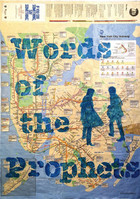Prophets Old and New: Speaking Truth to Power
Prophets are uncomfortable to be around. They may influence people but they certainly do not make friends by telling us hard truths we would rather not hear, especially when they claim to speak for God. Much is made of their ability to foretell the future, but, in reality, prophets simply warn us with provocative and threatening words of the possible consequences of actions we know in our hearts to be wrong. They are far more courageous than the rest of us in “speaking truth to power,” a phrase coined in the 1940s by Bayard Rustin, an African-American Quaker and civil rights activist, which best expresses the modern prophet’s job description.
Those of us with a traditional Sunday School education know by heart the stories from the Hebrew Scriptures of Jonah and the whale, Daniel in the lions’ den, and Elijah swept up to heaven in a chariot drawn by fiery horses. We are less well versed in the content of the messages of Prophets like Amos, who warn against putting religious ritual about heart-felt faith, honoring rulers with overweaning ambitions, and manipulating the justice system to favor the rich and oppress the poor. These words of judgment often come tempered with mercy. God remains faithful to those who keep faith with God.
You often hear of someone having a “prophetic gift,” but it is not always welcomed by the recipient. Moses hemmed and hawed about taking on the mission of liberating the Children of Israel from slavery, claiming he had a speech impairment. Jeremiah pleaded he was too young to be a prophet. Jonah, the most reluctant of those called by God in the Hebrew Scriptures, spent three days in the belly of a great fish, before he was vomited up at Ninevah, the divine destination he was trying to flee. To make matters worse, Jonah moaned and groaned and wished to die when the Ninevans, who were sworn enemies of Israel, actually heeded his message of repentence.
Judging from the biblical narratives, the experience of being called could be awesome and downright terrifying for the prophet-to-be. Hiding out in the desert, Moses encountered God as a voice speaking from a burning bush, a sight-and-sound show guaranteed to stop anyone in their tracks. A six-winged seraph placed a burning coal in Isaiah’s mouth in a vision of God enthroned, the train of whose robe filled a whole temple. Ezekiel saw multi-winged angelic beings with human and animal faces moving in flight precision above whirling wheels like a flying saucer and watched a valley full of dried bones take on flesh and human form and return to life.
Words were not enough for the prophets of the Bible to get their message across. They often engaged in what we would call “performance” art, doing symbolic things that would make many church-goers today blush. Isaiah walked around naked for three years. Jeremiah wore the yoke of an oxen and used dirty underpants as an illustration. Ezekiel was told to lie down on his left side for 390 days and, then, forty days on his right side and staged an emblematic escape through a hole he dug in his wall. In one of the more bizarre prophetic enactments, Hosea was told to marry and have children with a “woman of harlotry,” representing Israel’s unfaithfulness to God.
The life expectancy of biblical prophets was not great. As Jesus’ death drew near, he wept over Jerusalem, the city, he said, that “kills the prophets and stones those sent to you .” He bemoaned the shedding of innocent blood of Zecharias, “slain between the temple and the altar”—a not uncommon fate for clerical speakers of truth. John the Baptist, his cousin and forerunner, met a gruesome end, his severed head served up on a platter as a present for the seductive step-daughter of the lecherous Herod Antipas. The apocryphal Lives of the Prophets gives accounts of Isaiah being sawn in two; Jeremiah’s death by stoning; and the torture and murder of Ezekiel, Micah, and Amos.
Thanks be to God, since the time of John the Baptist, bold men and women continue to speak truth to power. Just like the great biblical performance artists, Mahatma Gandhi demonstratively championed India’s independence in the first half of the 20th century by appearing before top-hat, tail-coated British officials dressed in a dhoti, traditional Indian wrap-around wear favored by common folk. He challenged the imperial monoply on salt and textiles by leading a march to the sea to gather the seasoning and encouraged Indians to make homespun cloth by mastering, himself. thread-making on a pre-industrial spinning wheel.
Like the jailbird, Jeremiah, Gandhi was sentenced to six years in prison and released after two for health reasons. Inspired by Gandhi’s non-violent protests, American Civil Rights Leader Martin Luther King Ir. came to know the inside of numerous cells, when he was jailed 29 times in his struggle to end racial segregation. Roman Catholic Socialist Activist Dorothy Day was in and out of prison on dozens of occasions for acts of civil disobedience, championing everything from votes for women to better working conditions for migrant labor. Russian Dissident Alexander Solzhenitsyn spent eight years in the Gulag Archipelago, the network of prison camps that crisscrossed the Soviet Union during the Stalinist era.
Solzhenitsyn won the Nobel Prize for Literature in 1970 for his documentation of the Soviet Reign of Terror and was banished from his homeland four years later, proving the old adage that “the pen is mightier than the sword.” English Evangelical Reformer William Wilberforce published A Letter on the Abolition of the Slave Trade in 1807, culminating a two decade-long battle to end this “irremediable wickedness.” Two months later Parliament voted to end the slave trade by an overwhelming majority. American Environmentalist Rachel Carson awakened the nation to the dangers of pesticides in 1962 in Silent Spring, a“fable for tomorrow” where she envisioned a town without the birds and the bees because of DDT
The modern age has had its share of prophets who made the ultimate sacrifice. Both Gandhi and King fell victim to assassins’ bullets. The anti-Nazi German theologian Dietrich Bonhoeffer was executed for his involvement in an unsuccessful plot in 1944 to kill Hitler. In a scene eerily reminiscent of the medieval murder of Archbishop Thomas Becket in Canterbury Cathedral, Archbishop Oscar Romero was gunned down by a right-wing hit squad while presiding over Mass in a hospital chapel in 1980. The Roman Catholic prelate had become a thorn in the side of the authorities for his increasingly vocal calls for social justice and an an end to the violence in El Salvador’s civil war.
Jesus famously said that “a prophet has no honor in this own country.” Desmond Tutu, the Anglican Archbishop of Cape Town, is a remarkable exception. He effectively asserted his clerical authority to bring an end to white rule in South Africa and spoke out repeatedly on social and political issues, giving, in effect, a voice to Anti-Apartheid Leader Nelson Mandela, who was serving a life sentence at the time in prison. When apartheid ended in 1990, Tutu showed the world how a peaceful transition of power could come about, mediating between political enemies, as chairman of the Truth and Reconciliation Committee. He was honored with the Nobel Peace Prize in 1984.
John the Baptist is remembered as the “voice of one crying in the wilderness” in fulfillment of a prophecy in Isaiah. When the question is asked today where all the prophets have gone, the simplest answer might be that clarion calls like the Baptizer’s message of repentence, echoing through empty desert valleys, can no longer be heard above the high volume babble of “fake” truth-tellers who use social media now to spread all kinds of falsehoods and bizarre conspiracy theories.
The popular 1960s duo of Simon & Garfunkle offered a dystopian vision of the future in The Sound of Silence, singing of a time when the words of the prophets would be found “written on the subway walls and tenement halls.” And why not? God has used equally strange means to reach out to humankind, employing a motley band of outliers to speak words of truth since time immemorial.
The illustrations for this essay come from the Sacred Art Pilgrim Collection.
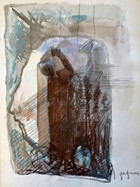
The Prophet
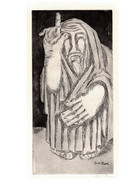
The Prophet

Head of a Prophet

Jonah and the Whale
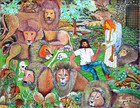
Daniel in the Lions’ Den
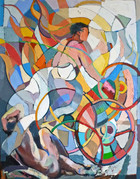
Elijah and the Fiery Chariot
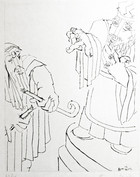
Amos 7: 12-13 (Prophet and Priest)
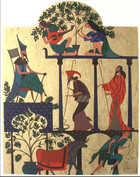
Moses: "Let My People Go"
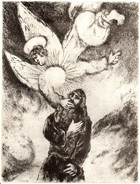
Calling of Jeremiah
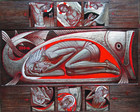
Jonah in the Belly of the Fish
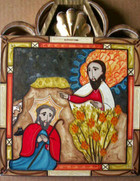
Moses and the Burning Bush
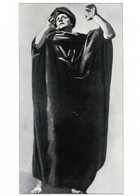
Isaiah
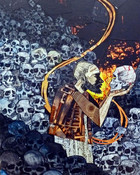
Ezekiel in the Valley of Dry Bones
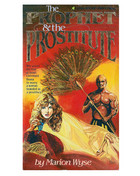
Hosea: The Prophet & the Prostitute
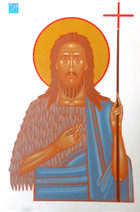
John the Baptist

Gandhiji
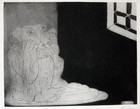
Jeremiah in Prison
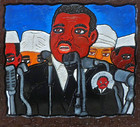
Martin Luther King: "I have a Dream"
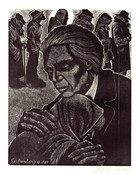
Dorothy Day
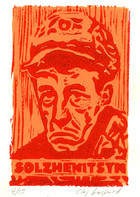
Alexander Solzhenitsyn
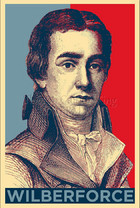
William Wilberforce
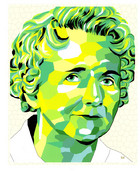
Rachel Carson
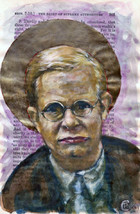
Dietrich Bonhoeffer
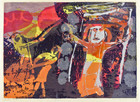
St. Thomas Becket

St. Oscar Arnulfo Romero
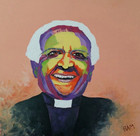
Bishop Desmond Tutu
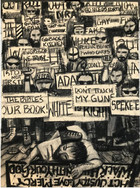
A Modern Day Prophet (Micah 6:8)
